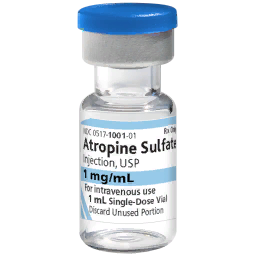Atropine
| Atropine | |||||||||||||
|---|---|---|---|---|---|---|---|---|---|---|---|---|---|

|
|||||||||||||
| Item | |||||||||||||
|
|||||||||||||
| Vial | |||||||||||||
| Vial Size | 1ml | ||||||||||||
| Vial Contents | 1mg | ||||||||||||
| Vial Concentration | 1mg/ml | ||||||||||||
| Medication | |||||||||||||
| Route(s) of administration | IV/IM | ||||||||||||
|
Dose Range
(Use case dependant) |
2-4mg >1mg |
||||||||||||
| Medication Effects | |||||||||||||
|
|||||||||||||
| Technical | |||||||||||||
|
|||||||||||||
Atropine is a medication used to treat Nerve Agent Exposure and manage Bradycardia.
Function
Atropine is used in the case of nerve agent exposure, atropine will block the muscarinic effects of nerve agents and prevent complete respiratory failure.
Depending on severity higher doses of atropine may be required to fully manage and treat nerve agent exposure.
Atropine may also be used to manage bradycardia caused by other medications.
Atropine is administered intravenously or intramuscularly with a rapid to quick onset, moderate peak and duration.
Usage
The Use Syringe action is available on the Torso and Limbs in the
![]() Medication
Tab
Medication
Tab
The Push Atropine action is available on the Torso and Limbs in the
![]() Medication
Tab
Medication
Tab
The Inject Atropine action is available on the Torso and Limbs in the
![]() Medication
Tab
Medication
Tab
Medications require a ![]() Syringe to be able to be drawn and administered.
Syringe to be able to be drawn and administered.
IV access is achieved with IV Catheters or IO devices.
Medications can be administered intramuscularly with just a syringe.
Dosing
Nerve Agent Exposure: Push 2-4mg initially, more as required
Bradycardia: Push >1mg IV, as required
Effects
- Heart Rate: + +
- Blood Pressure: N/A
- Respiration Rate: +
Potential Complications
- Tachycardia
- Cardiac Arrest
Indications
- Nerve Agent Exposure
- Bradycardia
Contraindications
- Tachycardia (NOT from nerve agent exposure)
 ACM Wiki
ACM Wiki
